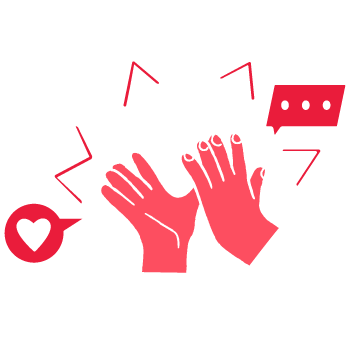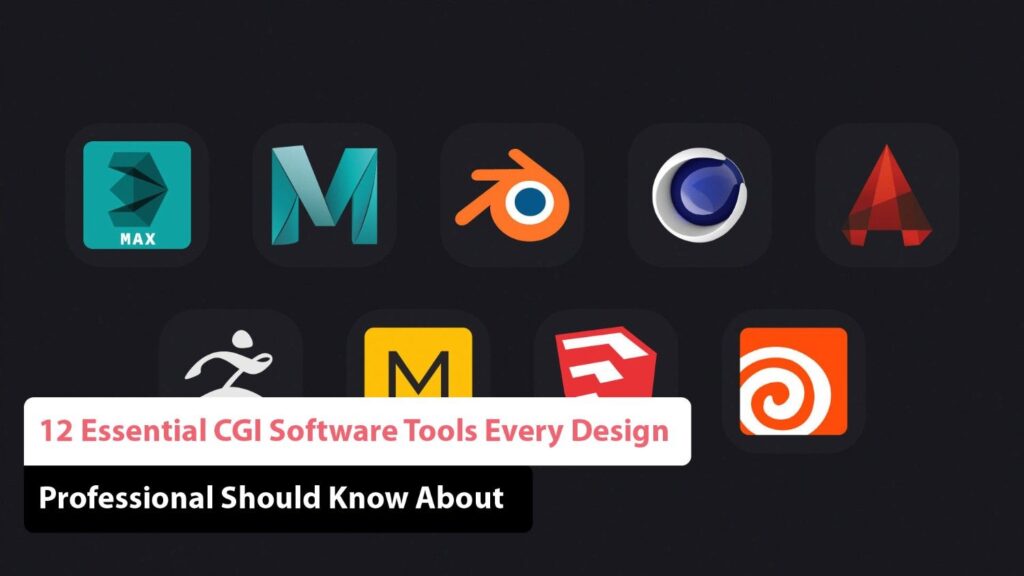
Visual effects (VFX) have both seen incredible advancements, and the rise of CGI (Computer Generated Imagery) stands at the forefront of this transformation. As technology evolves, CGI has redefined design and entertainment, delivering effects, animations, and blockbuster experiences. Despite its nature, CGI has faced significant scrutiny in recent times, making it essential to understand what exactly CGI truly entails.
CGI refers to the use of computer graphics in various forms of media and art. This can include movies, video games, TV shows, or any 2D and 3D animations, objects, or renderings. Whether it’s enhancing characters and environments or animating entire scenes, CGI plays a crucial role in modern visual storytelling.
From subtle enhancements to dramatic effects, CGI has become the go-to visual tool for major films in recent years. Its ability to bring imagination to life has revolutionized creative processes across industries. If you’re a design professional to leverage the power of CGI, you’re in the right place. This article will explore the top 12 CGI software options to help you create stunning visuals and set yourself apart from the competition. Let’s explore these tools and take your creative projects to new heights.
What is CGI Software
Computer Generated Imagery (CGI) encompasses the use of computer graphics to produce visual effects, animations, and images across a wide range of mediums, including film, video games, architecture, advertising, and beyond.
CGI software empowers artists, designers, and professionals to create high-quality digital visuals and animations. With the capabilities of computers, these tools simplify and enhance the creative process, enabling users to bring their imaginative ideas to life with greater efficiency and precision. With advanced features such as realistic rendering, texture mapping, and character animation, CGI software opens up endless creative possibilities. Whether you’re a seasoned professional or just starting, these tools provide the flexibility and power to take your projects to new heights. the future of visual storytelling and let your creativity flourish with cutting-edge CGI software.
Examples Of CGI In Movies
Throughout cinema’s history, CGI has transformed film-making, from improving single scenes to creating entire films. It empowers filmmakers to bring imaginative worlds to life, pushing the boundaries of what’s possible on screen.
1. The Young Sherlock Holmes:
One of the first notable uses of CGI occurred in the 1985 film The Young Sherlock Holmes, which introduced the stained-glass knight the first character ever created using CGI software.
Though the character appeared on screen for only a short time, its creation took six months and represented a major milestone in the integration of CGI technology into live-action films. This achievement set the stage for more complex CGI creations in future films, opening the door to the visual effects we see today. The stained-glass knight remains a symbol of early innovation in digital filmmaking. Its success proved that CGI could enhance storytelling in ways previously thought impossible.

Image Source: The Young Sherlock Holmes
2. Jurassic Park:
A defining moment for CGI came with the release of Jurassic Park (1993). Although the film incorporated animatronics, it was the revolutionary CGI that brought the dinosaurs to life, showcasing techniques that still impress audiences today.
The success of Jurassic Park proved CGI’s ability to create realistic and captivating effects that surpassed the limitations of traditional methods, forever changing the landscape of visual storytelling. This breakthrough opened the door to a new era in film, where CGI could seamlessly blend with live-action to create immersive worlds. The film’s visuals set a new standard for visual effects, influencing countless films that followed. It solidified CGI as a powerful tool in the hands of filmmakers.

Image Source: Jurassic Park
3. Avatar:
Another defining film in the evolution of CGI was Avatar (2009). By blending live-action with motion-capture technology, Avatar set new standards for visual effects. With a production cost of $425 million, it became the most expensive film ever made at the time, demonstrating the immense scale and ambition achievable through advanced CGI.
The film’s visuals transported audiences to the lush world of Pandora, showcasing the incredible potential of CGI to create fully realized, immersive environments. Avatar revolutionized the way filmmakers approached visual storytelling, pushing the boundaries of what CGI could accomplish. Its success has had a lasting impact on the use of motion capture and CGI in modern cinema.

Image Source: Avatar
4. Toy Story:
The 1995 release of Toy Story marked the first-ever full-length computer-generated film. As Pixar’s debut feature, Toy Story ran for 80 minutes, far surpassing the length of any previous CGI work, and set a new benchmark for animated films.
Its success opened the door for future CGI-driven productions, proving that computer-generated films could captivate audiences and stand alongside traditional animation and live-action movies as a powerful storytelling medium. Toy Story also demonstrated the potential of CGI to bring imaginative worlds and characters to life with remarkable detail. Its innovative use of technology laid the foundation for the modern era of CGI animation, inspiring countless filmmakers and animators. The film’s achievement continues to influence the animation industry today.

Image Source: Toy Story
Top 12 Trending CGI Software Tools of 2025
Here are the 12 must-know CGI software tools you shouldn’t miss. These essential programs will create your creative projects and help you stay ahead in the ever-evolving digital design world. Discover the tools that can transform your visions into stunning realities.
1. Adobe After Effects: Create Visual Masterpieces
Adobe After Effects, a key component of the esteemed Adobe Creative Cloud, is a powerhouse for designers aiming to create extraordinary visuals. Whether you’re animating characters, incorporating dynamic effects like rain or fire, or delving into 3D space, Adobe After Effects offers a wealth of impressive features. Its versatile tools for visual effects and motion graphics make it easy to bring your creative ideas to life. From character animation and smooth transitions to engaging movie titles and intros, this software enhances the quality of any animation project. With its robust community support and frequent updates, After Effects remains a top choice for professionals.

Source: Techradar
2. Autodesk Maya: Build Immersive and Realistic Worlds
Autodesk Maya is a user-friendly software designed to create intricate characters, expansive environments, and stunning effects. This powerful 3D animation and visual effects tool allows you to create visuals worthy of blockbusters and develop lifelike characters with ease. Offering a range of subscription packages to fit different needs and budgets, Autodesk Maya ensures you have the resources to create detailed characters, shots, and entire worlds. With advanced features like cloth simulation, intuitive modeling, engaging animation, and high-quality visuals, Autodesk Maya is an essential tool for design professionals across various fields. Its extensive capabilities and industry-standard tools make it indispensable for creating both realistic and imaginative digital content.

Source: Autodesk Maya
3. Daz Studio: Explore the 3D Universe
Daz Studio is an ideal gateway for bringing the 3D universe to life. Whether you’re a beginner or an experienced animator, this software allows you to create stunning 3D characters and environments with photorealistic rendering. Featuring a complete library of both premium and free 3D content, Daz Studio unlocks your creative potential and turns your imagination into reality. Explore a world of renders, rigs, and poses, and let Daz Studio be your ultimate creative partner. Its intuitive interface and versatile tools make it easy to craft detailed scenes and animations, making it a valuable asset for any 3D artist. With frequent updates and a supportive community, Daz Studio ensures that you stay at the forefront of 3D creation.

Source: Styly
4. Blender: Speedy and Free 3D Creations
Blender is a powerful, open-source software that enables designers to create high-quality visuals quickly and efficiently. With its dynamic ecosystem and active community, Blender supports your creative journey, helping you tackle challenges and fuel your artistic passion. Featuring advanced capabilities such as VR rendering support, PBR shaders, GPU and CPU rendering, HDR lighting, and real-time viewport preview, Blender consistently delivers exceptional results. Its multi-resolution and dynamic subdivision tools, along with full N-Gon support, provide everything you need to produce stunning and detailed visuals. Blender’s regular updates and extensive library of plugins further enhance its versatility, making it a top choice for both amateur and professional designers.

Source: Blender
5. Pixologic ZBrush: Master the Art of Digital Sculpting
Pixologic ZBrush, developed by Maxon, is a robust 3D software renowned for its digital painting and sculpting capabilities. Offering customizable textures, brushes, and real-time virtual clay painting, ZBrush is a preferred tool for jewelry designers, game developers, illustrators, animators, and various other professionals. This software enables precise design determination and visualization of the final model, ensuring top-notch quality for your creations. Equipped with an extensive range of tools, Pixologic ZBrush empowers you to achieve remarkable results in your designs and animations. Its advanced features, such as dynamic subdivisions and complex detailing, make it an invaluable asset for producing intricate and high-resolution models. With ZBrush, you can push the boundaries of creativity and bring your most ambitious projects to life.
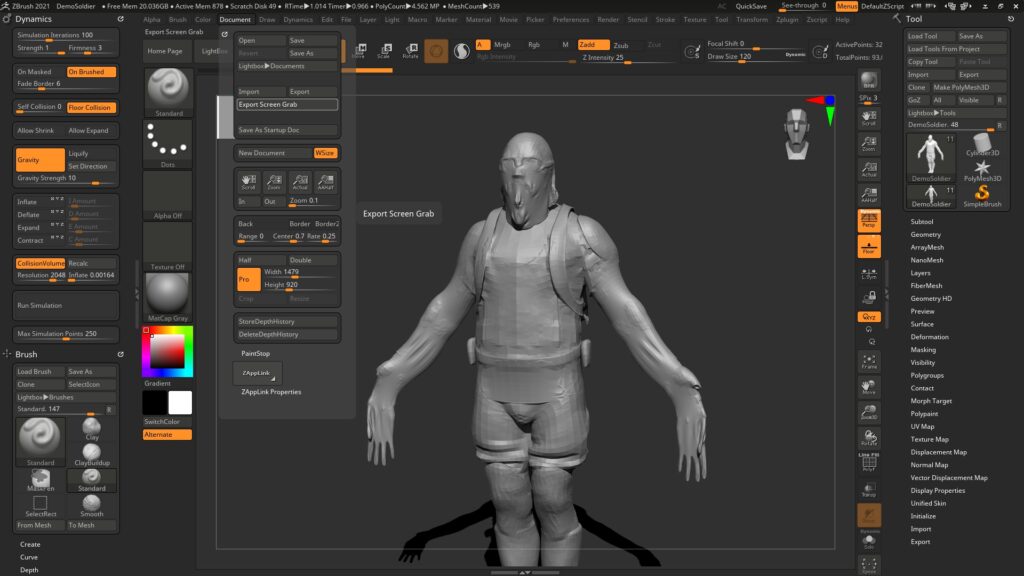
Source: ZBrush
6. Powtoon: Create Engaging and Compelling Visual Communications
Powtoon enables users to create distinctive video ads, social media content, and engaging animations that captivate viewers. With its customizable features, you can deliver impactful messages using animated characters, dynamic video backgrounds, and versatile templates. Differentiate yourself in the market, attract your target audience, and maintain their interest with Powtoon’s extensive toolkit. Streamline your workflow and create impressive visual communications with this intuitive and user-friendly software. Its wide range of pre-designed elements and drag-and-drop functionality make it easy to produce professional-quality content quickly. Whether you’re creating promotional videos or educational animations, Powtoon helps you bring your creative vision to life effortlessly.
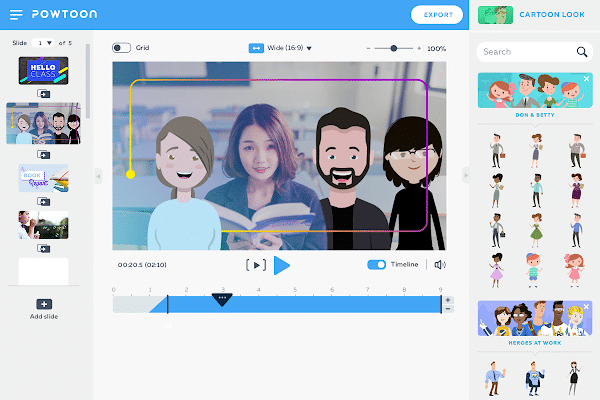
Source: Powtoon
7. Pencil2D Animation: A User-Friendly Tool for 2D Animation
Pencil2D Animation, as its name implies, is a user-friendly tool designed for hand-drawing animations in a 2D space. This open-source and cross-platform software is compatible with Linux, macOS, Windows, and FreeBSD. Featuring support for both vector and raster graphics, it allows you to easily toggle between the two to achieve your desired effects. Unleash your creativity with Pencil2D Animation and bring your 2D visions to life. Its intuitive interface and straightforward tools make it accessible for both beginners and experienced animators. Whether you’re creating simple sketches or complex animations, Pencil2D offers the flexibility and functionality needed to refine your artistic projects.

Source: Desde Linux
8. Synfig Studio: Animate 2D Creations with Dynamic Precision
Synfig Studio is an open-source 2D animation software that works across multiple platforms, including OSX, Linux, and Windows. It allows designers to produce impressive 2D animations without the need for laborious frame-by-frame work. With advanced features such as vector tweening, bone rigging, layers, and filters, Synfig Studio delivers film-quality animations and offers dynamic structures for character development. Discover its capabilities and effortlessly create high-quality 2D animations with Synfig Studio. Its user-friendly interface and comprehensive toolset make it accessible for both novices and seasoned animators. Whether you’re creating intricate scenes or simple animations, Synfig Studio provides the flexibility and power needed to bring your creative vision to life.

Source: Synfig
9. Autodesk Tinkercad: Unleashing Your Creativity with Intuitive 3D Design
Autodesk Tinkercad is an intuitive and free application designed to help engineers and designers explore 3D design, coding, and electronics. Emphasizing foundational skills, Tinkercad enables you to transform creative ideas into detailed models with ease. You can easily position, adjust, and combine shapes on a canvas to create realistic and intricate designs. Explore the realms of 3D design, electronics, coding, and augmented reality with Tinkercad, and bring your imaginative concepts to life. Its user-friendly interface and comprehensive tutorials make it ideal for beginners and advanced users alike, allowing you to experiment and innovate without limitations. Whether you’re building prototypes or learning new skills, Tinkercad provides the tools and flexibility to make your projects a reality.

Source: 3dnatives
10. Clara.io: Streamlined Cloud-Based 3D Modeling and Rendering
Clara.io is a comprehensive, cloud-based platform that allows users to animate, model, and render images directly online. This powerful software provides advanced modeling tools, VRay Cloud rendering, and multi-platform support, along with seamless sharing options and a modern interface. You can import any file format, collaborate effortlessly with others, and utilize features like the REST API, plugins, and scripting capabilities. Clara.io serves as your all-in-one solution for efficient cloud-based 3D modeling and rendering. Its collaborative features enable real-time teamwork, while its scalability ensures it meets the needs of both small projects and large-scale productions. Whether you’re working on individual designs or complex animations, Clara.io offers the flexibility and power to bring your creative vision to life.
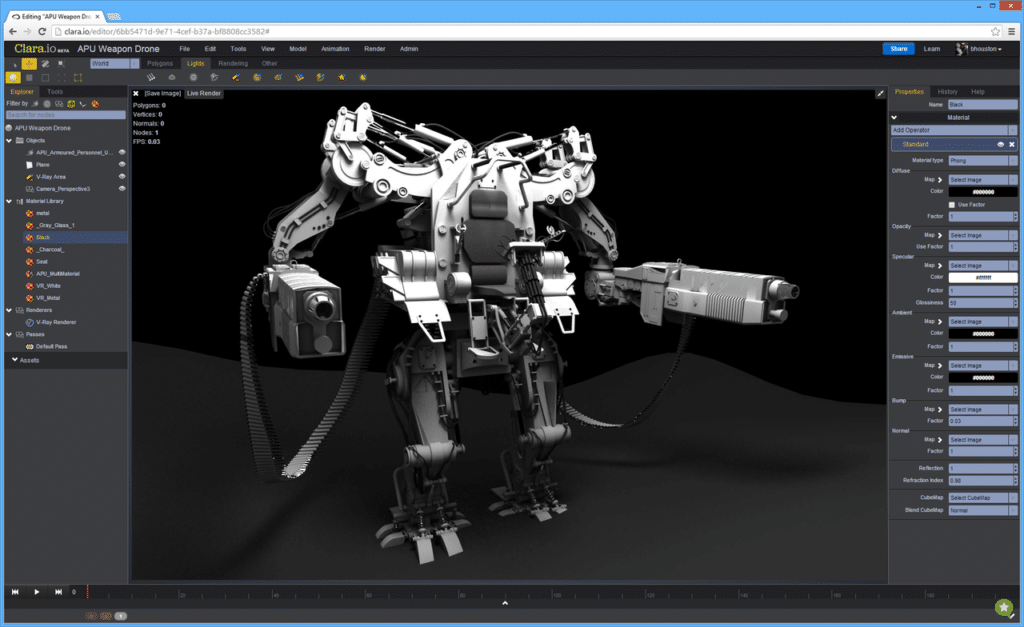
Source: Wikipedia
11. Rive: Simplifying Interactive Animation for Everyone
Rive is a software designed for creating interactive animations that can be seamlessly integrated into apps, websites, and games. It enables brands to create their products’ visual appeal and boost their engagement. With Rive, you can create eye-catching animations, such as splash screens, characters, buttons, and immersive environments. Streamline your design workflow and achieve compelling results that captivate your audience. Its real-time collaboration features and intuitive interface make it easy to iterate and refine your animations, ensuring a polished final product. Whether you’re enhancing user interfaces or adding dynamic elements to your projects, Rive provides the tools you need to make a lasting impression.

Source: Rive
12. Houdini: Advanced Procedural Animation and Effects
Houdini, developed by SideFX, is renowned for its sophisticated procedural animation and visual effects (VFX) capabilities. It provides advanced tools for creating complex simulations, including fluids, smoke, and fire, making it a preferred choice in the film and gaming industries. With its node-based workflow, Houdini offers intricate control and flexibility, enabling the creation of dynamic effects and animations with precision. Its extensive library of pre-built assets and powerful simulation tools allow for the creation of highly realistic effects, while its robust scripting and customization options cater to the needs of advanced users. Whether you’re working on cinematic scenes or interactive game elements, Houdini delivers the depth and versatility required for cutting-edge visual effects.
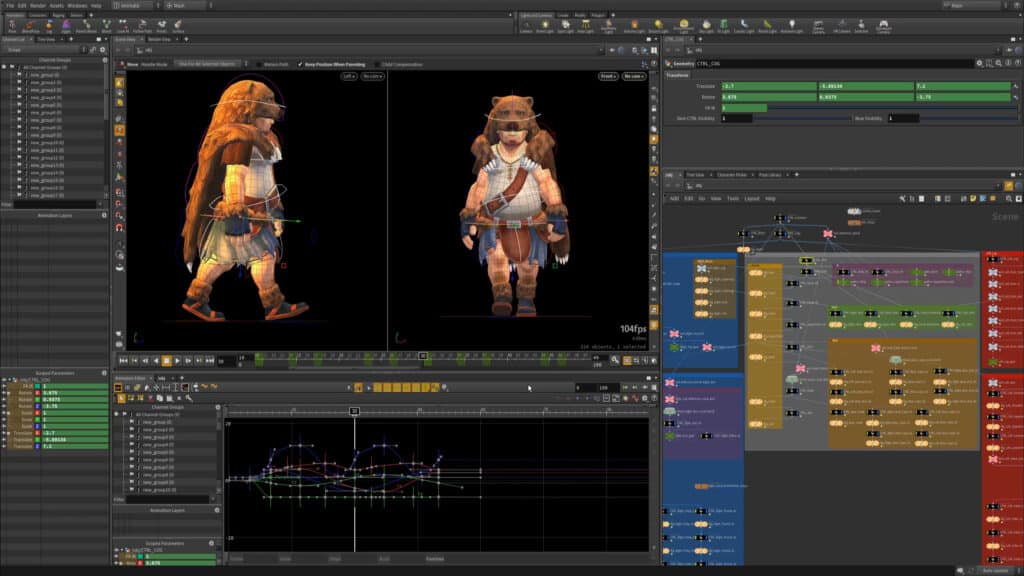
Source: Sidefx
The Complete CGI Creation Process: From Concept to Final Render
The CGI (Computer-Generated Imagery) process is a complex journey that transforms initial ideas into visually compelling digital content. From shaping creative concepts to adding intricate textures, each phase demands both technical skill and creative vision. This complete process is crucial in producing lifelike visuals that engage audiences across films, games, advertising, and more. Let’s break down each critical step in the CGI creation process.
| Stage | Description |
|---|---|
| Concept & Storyboarding | Every CGI project begins with conceptualization and storyboarding, where artists visualize the storyline, characters, and environments. At this stage, creative teams draft sketches and outline sequences, providing a rough layout of scenes and the general aesthetic. Storyboards help guide the animation workflow, ensuring consistency and clear visual storytelling. |
| Modeling | In the modeling phase, digital artists build 3D models of characters, objects, and environments that form the backbone of CGI scenes. Using specialized 3D modeling software, they create digital structures and add intricate details to bring models to life. This stage demands a keen understanding of shapes and spatial design, as these models will directly impact of the animation. |
| Texturing & Shading | Texturing and shading add depth and realism to models. Texturing involves applying colors, patterns, and materials to surfaces, creating appearances like metal, wood, or fabric. Shading defines how these models interact with light, adding shadows and highlights that bring a lifelike quality to the objects. This phase requires attention to detail, as it’s essential in transforming plain models into realistic assets. |
| Rigging & Animation | Rigging is the process of adding a digital skeleton to models, enabling them to move. Animators then manipulate these rigs to create fluid character movements and dynamic object interactions. In character animation, this stage is particularly critical, as it determines how naturally and believably characters will move, impacting the overall realism and emotional impact of the animation. |
| Lighting & Rendering | Lighting artists set up light sources to create mood, enhance detail, and add depth to scenes. Correct lighting can make scenes appear more dramatic, warm, or cold, influencing the viewer’s perception. Rendering then finalizes each frame by processing all elements including textures, lighting, and shading into high-resolution images or sequences. Rendering is computationally intensive but is essential for creating polished visuals. |
| Compositing & Editing | Compositing is the final stage, where rendered frames are layered, refined, and seamlessly blended to create cohesive scenes. Editors synchronize visual and audio elements, polish color grading, and apply final effects to enhance the visual impact. This stage ensures that every element aligns with the project’s vision, resulting in a seamless and immersive CGI experience for the audience. |
Decoding the Secrets: Expert Answers to Your CGI Software Questions
Explore the inner workings of CGI technology and get expert insights into the tools and techniques that power stunning visual effects. Discover everything you need to know to master the art of CGI.
What is CGI software and how does it work?
CGI software tools, short for Computer-Generated Imagery software, is used to create graphics and animations across various media such as films, video games, and websites. These tools enable artists and designers to produce 2D and 3D models, scenes, and special effects through advanced computer algorithms. With capabilities ranging from detailed texturing and realistic lighting to dynamic simulations and intricate animations, CGI software tools enhances visual storytelling and user experiences. Its versatility allows for the creation of both fantastical worlds and lifelike representations, making it essential for modern digital media production.
Why is CGI software essential in design?
CGI software plays a vital role in design by enabling the creation of high-quality, realistic images and animations. This capability enhances visual communication, provides clearer design visualization, and aids in prototyping, ultimately streamlining and improving the overall design process. By allowing designers to experiment with various elements and scenarios virtually, CGI software tools reduces the need for physical prototypes and accelerates decision-making. Its precision and flexibility help ensure that designs meet expectations before they are finalized, contributing to more effective and efficient project development.
How can I choose the right CGI software for my needs?
Selecting the ideal CGI software tools requires considering your specific needs, budget, and skill level. Evaluate factors such as the software’s user interface, available features, compatibility with other tools, and the availability of learning resources. It’s also wise to take advantage of any free trials offered before making a purchase decision. Assess how well the software integrates with your existing workflow and whether it supports the types of projects you plan to undertake. Additionally, researching user reviews and seeking recommendations from industry professionals can provide valuable insights into the software’s performance and reliability.
Additional Tools for Creative Professionals: Expanding Your Creative Toolkit
We’ve highlighted 12 key software tools to create your design or animation skills. However, there are also emerging tools that can further improve your creativity and expertise. Let’s explore these innovative options and discover how they can provide new capabilities, streamline your workflow, and inspire fresh ideas in your projects. By staying updated with the latest advancements, you can continually refine your skills and push the boundaries of your creative potential.
1. MidJourney: AI Art Generator for Creative Vision
The MidJourney AI Art Generator is a cutting-edge tool that leverages machine learning algorithms to create distinctive and mesmerizing artwork. It provides creative professionals with a novel approach to explore their artistic vision and produce visually striking results. With its ability to generate unique styles and intricate designs, this tool opens up new possibilities for innovation and creativity in the art world. Whether for conceptual exploration or final pieces, how to use Midjourney offers an exciting way to improve your artistic process.

Source: MidJourney
2. Machine Learning in Animation: Improving Creative Workflows
Machine Learning Animation is an advanced technique that integrates artificial intelligence with animation to produce dynamic and lifelike movements. This emerging technology offers design professionals groundbreaking opportunities to expand the limits of animation and bring their creative visions to life. By harnessing the power of machine learning, animators can achieve more natural and fluid motion, automate complex tasks, and generate innovative visual effects.
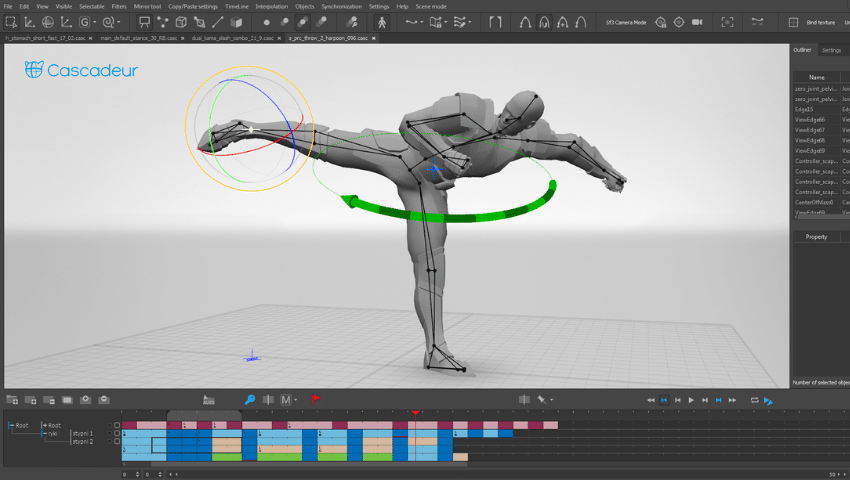
Source: Siggraph
3. Adobe Firefly: Ignite Your Creativity with Advanced Tools
Adobe Firefly is a robust software that merges the functionality of Adobe’s creative suite with cutting-edge AI capabilities. It enables designers to effortlessly incorporate AI-driven elements into their projects, boosting both their creativity and productivity. With features designed to enhance design workflows and automate complex tasks, Adobe Firefly transforms the creative process, allowing users to achieve more sophisticated results in less time. Its seamless integration with existing Adobe tools further amplifies its effectiveness and versatility.

Source: Techcrunch
How to Evaluate the Best CGI Software for Beginners
For beginners stepping into the vast field of Computer Generated Imagery (CGI), selecting the right software is a crucial first step. The software should not only be user-friendly but also equipped with the necessary tools to support creativity and skill development. Given the wide variety of options available, it’s important to evaluate software based on several key criteria to ensure that it fits the needs of someone just starting. Below is an in-depth look at the essential factors that should guide beginners in choosing the best CGI software tools:
1. Ease of Use:
One of the most important aspects for beginners is the ease of use. The software should have a simple, intuitive interface that allows new users to navigate through the program with ease. Beginners often find complex interfaces overwhelming, so a clean layout with easy-to-understand commands is essential. Tools like drag-and-drop functionality, built-in tutorials, templates, and pre-made assets can further enhance the user experience. These features allow beginners to quickly get started on their first CGI projects without the steep learning curve that more advanced software often presents.
2. Affordability:
Cost is another significant factor for beginners who may be hesitant to invest heavily in professional-grade CGI software tools right from the start. Therefore, the software should be reasonably priced, and ideally, it should offer various pricing tiers or subscription models to accommodate different budget levels. Many CGI software tools options provide free versions or trial periods, which can be extremely useful for beginners. This allows them to explore the software’s capabilities before committing to a full purchase. Look for platforms that strike a balance between affordability and functionality, ensuring that essential features are not sacrificed in cheaper versions.
3. Features and Capabilities:
While simplicity is key for beginners, the software should still be robust enough to offer the essential features needed for creating high-quality CGI projects. The ideal software should support 3D modeling, texturing, animation, and rendering while remaining accessible to users with no prior experience. For example, it should offer basic modeling tools for creating and manipulating 3D objects, the ability to apply textures and materials to give objects a realistic look, and options for animating these objects. Additionally, the software should provide a straightforward rendering process that outputs high-quality images or videos. It’s important that the software’s complexity scales with the user’s growing expertise—offering both basic and more advanced features so that the user doesn’t outgrow the software too quickly.
4. Community and Support:
The availability of a supportive and active user community can significantly ease the learning process for beginners. Software with a large and engaged user base often has numerous online forums, tutorials, and third-party learning resources. This kind of support network is invaluable, as it allows beginners to troubleshoot problems, ask questions, and get guidance from more experienced users. Many software companies also offer official tutorials, webinars, and knowledge bases, providing step-by-step instructions on how to use the tools. Furthermore, it is beneficial if the software offers dedicated customer support, such as live chat or email support, so that beginners can quickly resolve any technical issues.
5. Scalability and Future Growth:
While not an immediate concern for beginners, it’s worth considering how well the software will serve users as they advance in their skills. Some software options, while great for learning, may have limitations that could hinder future growth. Beginners should ideally choose software that offers scalability meaning it has the potential to support more advanced projects as the user’s expertise grows. This ensures that beginners won’t need to switch to a different, more complex program once they’ve outgrown the beginner-friendly tools. Software that integrates well with other CGI programs or supports plugins and extensions can also be advantageous, as it allows for more creative flexibility down the road.
6. Cross-Platform Compatibility:
In today’s digital age, many users prefer to work across multiple devices or operating systems. It’s important to select CGI software tools that is compatible with the platforms you’re using, whether it’s Windows, macOS, or Linux. Additionally, some CGI software tools offers cloud-based solutions, which allow users to work from any device and access their projects remotely. This can be particularly useful for beginners who want flexibility in how and where they work.
7. Learning Resources:
Given the complexity of CGI, the software must provide comprehensive learning resources for users. This can include online manuals, video tutorials, and even certification programs for those who wish to take their skills to a professional level. Some software platforms partner with educational institutions or provide free training materials to help beginners get started. Access to these resources can make a significant difference in how quickly and efficiently users can learn and apply new skills.
The Future of CGI: Integration and Innovation
The future of CGI has immense potential as technology continues to advance. CGI has already transformed movies and numerous industries, but there’s still ample opportunity for further advancements. Emerging techniques and technologies are set to make CGI even more realistic and immersive.
For instance, more advanced algorithms could generate intricate patterns and dynamic effects, improving visual impact. Additionally, improvements in both 2D and 3D software are expected to make CGI even more versatile and lifelike, pushing the boundaries of what’s possible in digital art and storytelling. As we move forward, the integration of artificial intelligence will further revolutionize CGI, enabling creators to achieve stunning results with greater efficiency. The collaboration between artists and cutting-edge technology will redefine the landscape of visual experiences, captivating audiences in ways we have yet to imagine.
Final Thoughts
CGI technology offers the ability to create and manipulate stunning visuals for commercials, video games, and films. While CGI is a crucial component of VFX (Visual Effects), it’s important to recognize that the two are distinct. To make the most of CGI, design professionals need access to top-tier CGI software tools.
If you’re seeking a team of skilled animators and designers to deliver exceptional digital solutions, consider Animotions Studio. We are a complete animation and digital studio committed to providing outstanding services. Our expertise spans a range of digital disciplines, ensuring that we can meet your unique project needs with precision and creativity. Connect with us today to explore how we can bring your vision to life.
Frequently Asked Questions (FAQ’s)
What is CGI software and how does it work?
CGI software tools, or Computer-Generated Imagery software, is used to create graphics and animations across various media such as films, video games, and websites. These tools enable artists and designers to produce 2D and 3D models, scenes, and special effects through advanced computer algorithms. CGI software enhances visual storytelling with capabilities like detailed texturing, realistic lighting, dynamic simulations, and intricate animations.
Why is CGI software essential in design?
CGI software is vital in design because it allows for the creation of high-quality, realistic images and animations. It improves visual communication, aids in design visualization, and supports prototyping. By enabling virtual experimentation with various elements, CGI software speeds up decision-making and reduces the need for physical prototypes, ensuring designs meet expectations before finalization.
How can I choose the right CGI software for my needs?
To choose the right CGI software tools, consider your specific needs, budget, and skill level. Evaluate factors such as the software’s user interface, features, compatibility with other tools, and the availability of learning resources. Utilize free trials when available and assess how well the software integrates with your existing workflow. Additionally, research user reviews and seek recommendations from industry professionals for valuable insights.
What are some of the top CGI software tools to consider?
Some top CGI software tools include:
- Adobe After Effects – This is used to create stunning visual effects and animations.
- Autodesk Maya – Ideal for building immersive 3D worlds and characters.
- Daz Studio – Excellent for 3D character creation and rendering.
- Blender – A powerful, free tool for versatile 3D creation.
- Pixologic ZBrush – Renowned for detailed digital sculpting and painting.
- Powtoon – Great for creating engaging video ads and social media content.
- Pencil2D Animation – A user-friendly tool for 2D hand-drawn animations.
- Synfig Studio – Useful for dynamic 2D animations without frame-by-frame work.
- Autodesk Tinkercad – An intuitive tool for 3D design, coding, and electronics.
- Clara.io – A cloud-based platform for 3D modeling and rendering.
- Rive – For creating interactive animations for apps and websites.
- Houdini – Advanced software for procedural animation and effects.
How can CGI software benefit my projects?
CGI software tools can greatly improve your projects by providing high-quality visuals, enabling detailed design and animation, and offering advanced tools for realistic effects. It helps in visualizing concepts, creating immersive experiences, and refining designs before final production. By leveraging CGI software tools, you can achieve more engaging and effective results in your creative projects.
Are there any emerging tools in CGI worth exploring?
Yes, there are several emerging tools worth exploring:
- MidJourney – An AI art generator that offers innovative ways to create unique and captivating artwork.
- Machine Learning for Animation – Integrates AI to enhance animation workflows and produce lifelike movements.
- Adobe Firefly – Combines AI capabilities with Adobe’s creative suite for advanced design features and automation.
